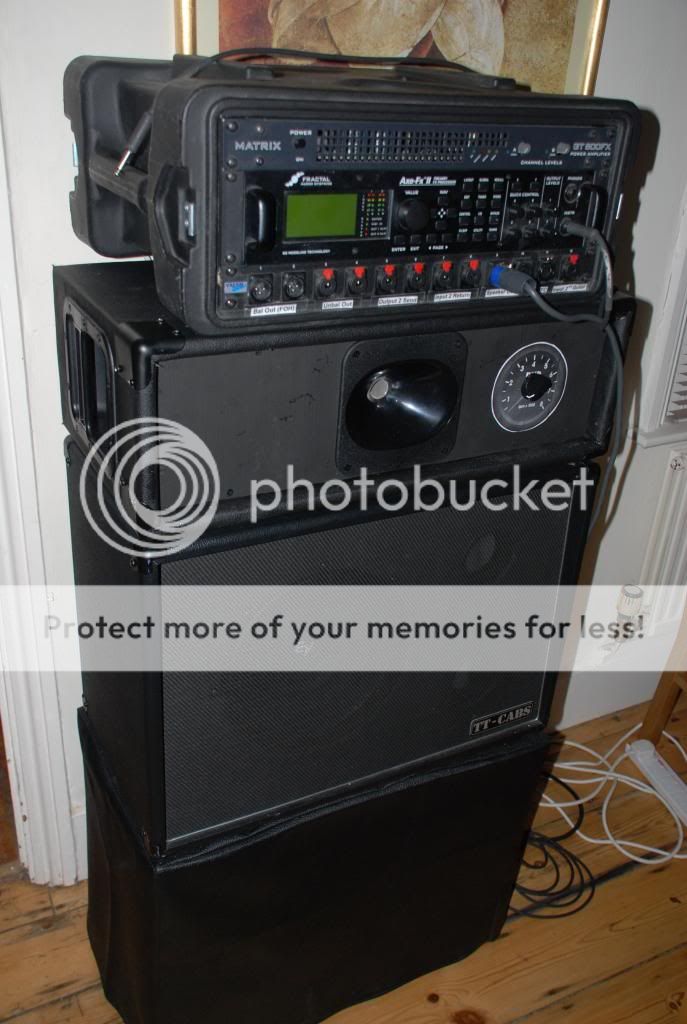Thanks Pdup. The DIY wasn't too difficult: I used standard 19mm birch ply, which is in fact slightly too thick and heavy for a horn which doesn't resonate that much, with only small surfaces. The timber yard cut the pieces to size reasonably accurately, and I used both Hard As Nails glue and screws, with thin battens to secure the front and rear - again probably not really necessary, but you know... I can't do tolex very well - I've always used blackboard paint on PAs I've made in the past. But at least the cabs match provided you don't look too closely. The horn gives the same dispersal as the speakers, so it works close up for me on a small stage. If anyone would like the speaker and crossover details, I'll post 'em. I had given Dirk at TT Cabs the specs, but he's too busy, which is a shame is it could become an earner for him.
I have some other purely pa 12" inch speakers, which i may also try in the LF cab. But it seemed to me that as the EVM sounds pretty rock and roll, then it's all doing it's job.
WIth the HF turned off, it sounds muffled - through the EVM and with no freqs above 1.6. WIth Output 1 going into the EVM cab without the cut-off, it also sounds muffled. But as you mix in the HF, the sparkle appears, and sounds to me more detailed than from Output 2 into just an EVM full freq without cab sims. NOt using the cab sims in this way is perfectly acceptable - I've been doing this for quite a while. But I think the cab sims do give it even more detail - it's like you can hear the cones working.... The way valve amps sound, but totally controllable.
BUt this is a high volume solution - it ain't hifi, and is designed to work with a band and be backline cutting through everything else (pleasurably). If it doesn't cut, then turning the knob has a drastic effect. Very good for swapping between LP and Strat.....a touch more for the LP.
WIth one EVM cab, around 4 does the trick. When I next gig a large stage and I use the second EVM, I expect it will require more. If you turn it right up, it's like a knife.





